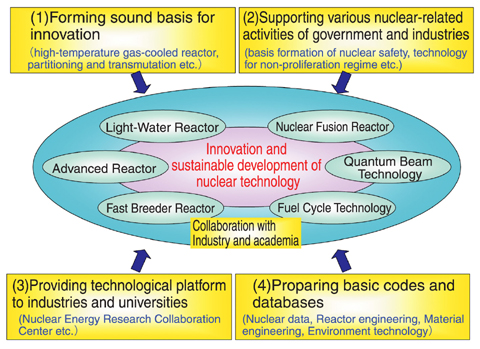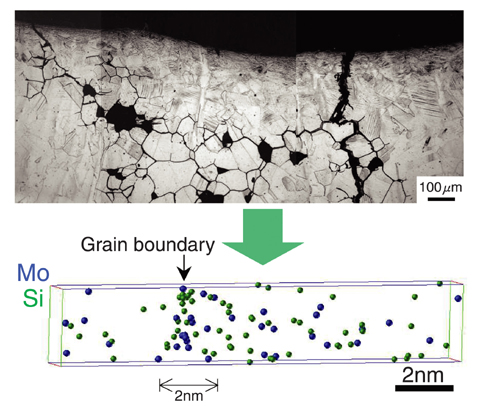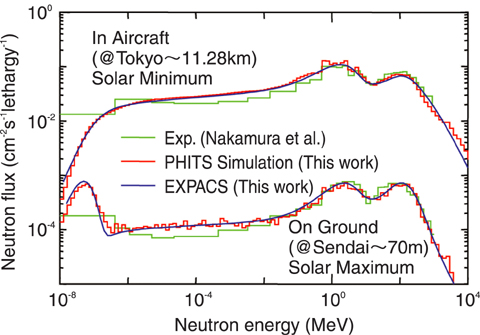
Fig.7-1 Roles of nuclear science and engineering research

Fig.7-2 Stress corrosion cracking observed in the core shroud of a light water reactor (upper), and concentration of Mo and Si atoms at a grain boundary revealed by 3-dimensional atom probe (lower).

Fig.7-3 Results of quick estimation of cosmic ray spectra at arbitrary points by EXPACS
The R&D activities of nuclear science and engineering research at the Japan Atomic Energy Agency have the four roles shown in Fig.7-1. In order to carry out these roles, nuclear data and reactor engineering, fuels and materials engineering, environment and radiation science, and nuclear applied heat technology are being conducted.
Various types of research are being performed to investigate the feasibility of advanced and innovative nuclear systems and to establish the basic technology for these systems, i.e. nuclear data, advanced nuclear and thermal design methods, etc. Detailed two-phase analysis codes processed with supercomputing technology as well as model experiments for code validation are being developed to establish new thermal design methods for advanced water reactors, super critical water reactors, and fast reactors. The feasibility of a tight-lattice core for an advanced water reactor, which aims at effective use of Pu in light water reactors, was confirmed as shown in Topic 7-1. Basic study on transmutation technology for long-lived nuclides is being conducted so as to reduce the burden of radioactive waste management. The effectiveness of partitioning and transmutation technology for waste management was evaluated as shown in Topic 7-2.
Basic studies on advanced nuclear fuel and cycle technology and the degradation of nuclear power plant materials are being made. In the advanced nuclear fuel cycles, minor actinides (MA: Np, Am, Cm), which are classified as high level radioactive wastes in the current nuclear fuel cycle, are expected to be recycled to reduce the burden of waste disposals. Topic 7-3 and Topic 7-4 describe important progress in fundamental technology of MA separation by aqueous and pyrochemical processes. Excellent results were also obtained for research into nuclear power plant materials to understand mechanisms of stress corrosion cracking (Fig.7-2), irradiation damage and corrosion degradation.
The R&D on environmental behavior, radiation protection and technology for strengthening the non-proliferation regime are carried out. For radiation protection, a model was established for estimating the cosmic ray spectra at any location in the atmosphere. Based on the model, we developed software named "EXPACS" that enables us to calculate the cosmic radiation doses instantaneously with precision by specifying the altitude, latitude and longitude, and time of interest (Fig.7-3). It is incorporated into JISCARD (Japanese Internet System for Calculation of Aviation Route Doses) of National Institute of Radiological Sciences (NIRS), and is utilized to enforce the administered radiation dose limits recommended for aircrews of Japan.
To expand nuclear energy application to heat utilizing industries, we continue extensive efforts of research and development for the high-temperature gas-cooled reactor (HTGR) technology and for the HTGR-heated hydrogen production system. Using the High Temperature Engineering Test Reactor (HTTR), safety demonstration tests simulating the events of partial loss of reactor coolant and inadvertent control rod withdrawal have been conducted as shown in Topic 7-7. Even in such abnormal events the reactor responds by self modulating to new stable states without any deviation from safe operating conditions. The planned first commercial HTGR power plant named GTHTR300 is conceptually designed based on these results, and promises to have excellent plant economy as shown in Topic 7-8.